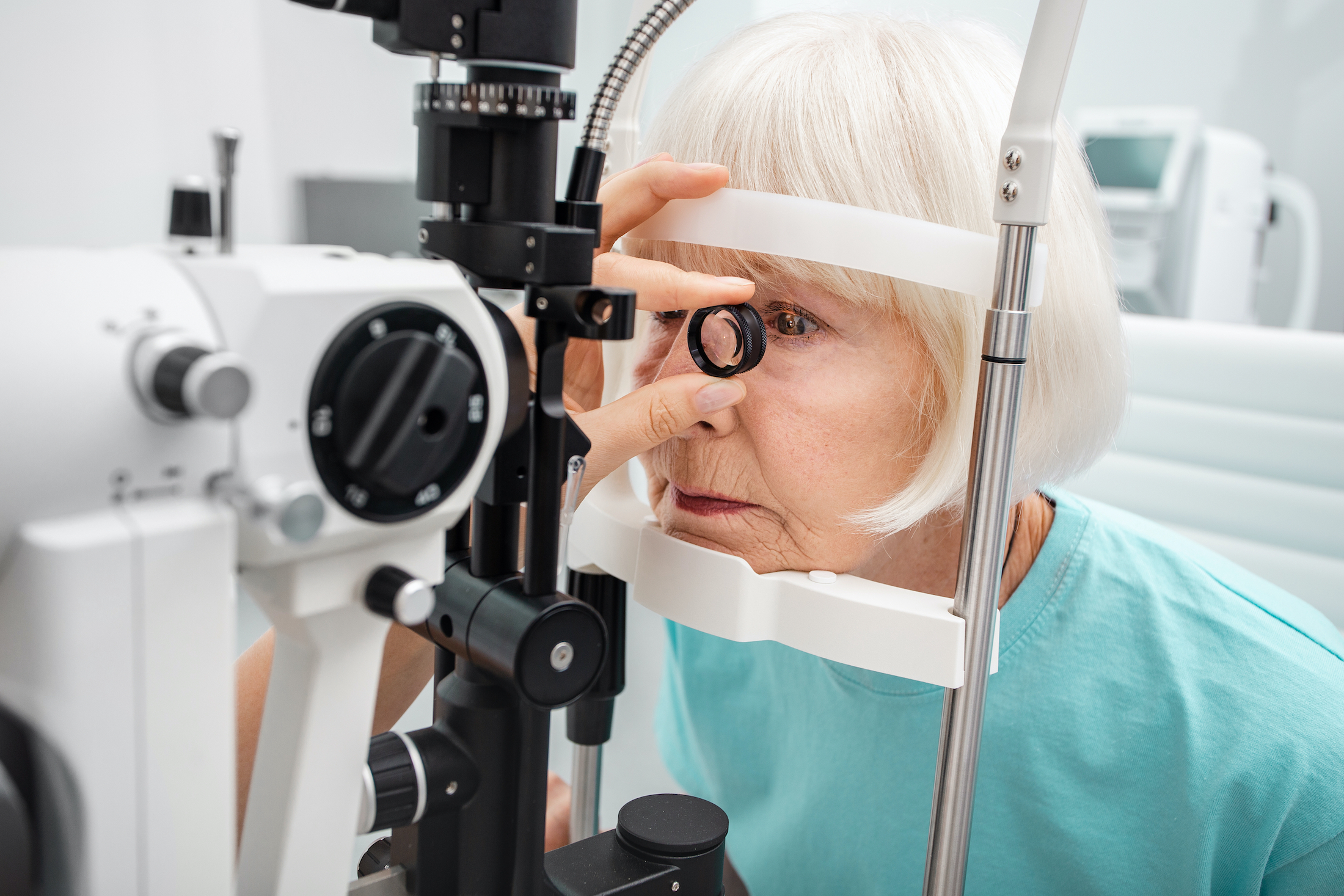Glaucoma is a degenerative eye condition that occurs when fluid buildup in the eye causes a rise in intraocular pressure, damaging the optic nerve. As the second leading cause of blindness in the world, the team at Atlantic Eye Institute is dedicated to helping patients with glaucoma preserve their vision through prompt diagnosis and comprehensive treatment.
To maintain stable eye pressure, a fluid called aqueous humor consistently flows in and out of your eye through a drainage canal. With glaucoma, the fluid can’t drain at the rate it should, elevating your eye pressure and eventually impacting the optic nerve.
This damage first presents as a loss of peripheral vision. However, many patients do not notice symptoms of glaucoma until irreversible vision loss has already occurred.
The best way to prevent vision loss from glaucoma is to attend regular eye exams, especially if you are at a higher risk of developing the condition. Early detection allows for treatment before substantial damage can occur, preserving your eyesight as much as possible.
A significant risk factor for glaucoma is age, as it appears most often in adults over 35-40 years old. Other risk factors can include:
If you are part of any of these higher-risk groups, it is even more vital that you schedule routine eye exams to ensure glaucoma doesn’t live up to its name as “the silent thief of sight.” It’s important to note that a simple “pressure test” is not enough to test for glaucoma.
Early glaucoma patients often have intraocular pressures that fluctuate frequently, and some may have “normal” eye pressure when tested.
Your eye doctor at Atlantic Eye Institute can perform a comprehensive eye exam to diagnose glaucoma. Some of the tests they may perform include intraocular pressure reading, visual acuity testing, and peripheral vision or visual field testing.
You can also undergo a retinal exam with the advanced Optomap device to achieve an even more thorough screening. For an extra $40 charge, your eye doctor can get a comprehensive panoramic view of the back of your eye, which allows you to avoid the hassle of pupil dilation and gives them the ability to screen for glaucoma using state-of-the-art technology.

Treating glaucoma involves lowering intraocular pressure to a stable level that stops optic nerve damage from occurring. The first option for many patients is prescription eye drops.
Many different medications have been developed over the years to reduce eye pressure. Some work by allowing fluid to drain better out of the drainage canal, and some work by lessening the amount of fluid your eye produces.
If your glaucoma progresses to the point where you need to use multiple topical medications and your eye pressure is still too high, your eye doctor may recommend a minimally invasive glaucoma surgery (MIGS). The treatment options offered at Atlantic Eye Institute include:
The OMNI surgical system helps lower intraocular pressure by removing blockages in the drainage canal across multiple points. It also enlarges the drainage angle and channels to allow for a better flow of aqueous humor in and out of the eye.
After removing the blockages, it delivers viscoelastic fluid to ensure the canal is clear. This procedure can potentially reduce or eliminate the need for prescription eye drops, making it beneficial for patients who are struggling with their side effects or have difficulty remembering to apply them on a regular schedule.
iStent is a procedure where two tiny stents are placed in your eye that connects at the back, improving drainage from the front of the eye. This can reduce intraocular pressure and lessen your need for prescription eye drops.
SLT, or selective laser trabeculoplasty, is a procedure that targets melanin-containing cells in the trabecular meshwork of the eye using pulses of low-energy laser light. The result is improved fluid flow through the drainage angle and reduced eye pressure.
LPI, or laser peripheral iridotomy, is a procedure primarily used to treat patients with narrow-angle or angle-closure glaucoma. It involves using a laser to make a tiny opening in the iris of the eye to allow fluid to drain more efficiently and improve intraocular pressure.